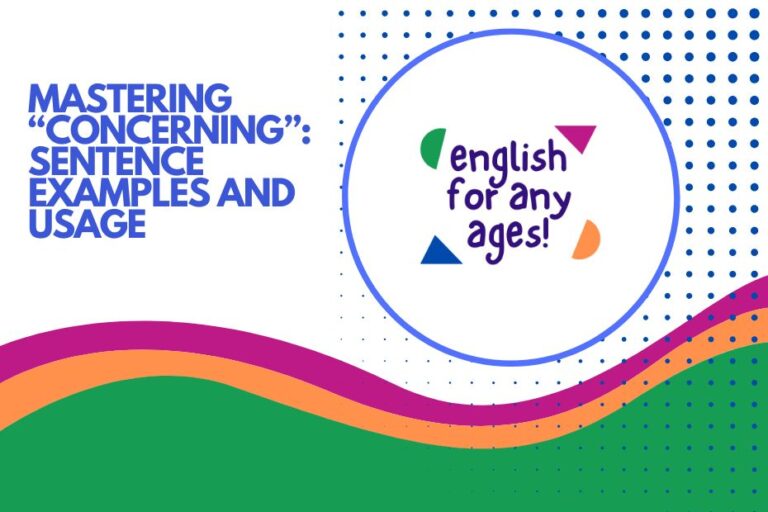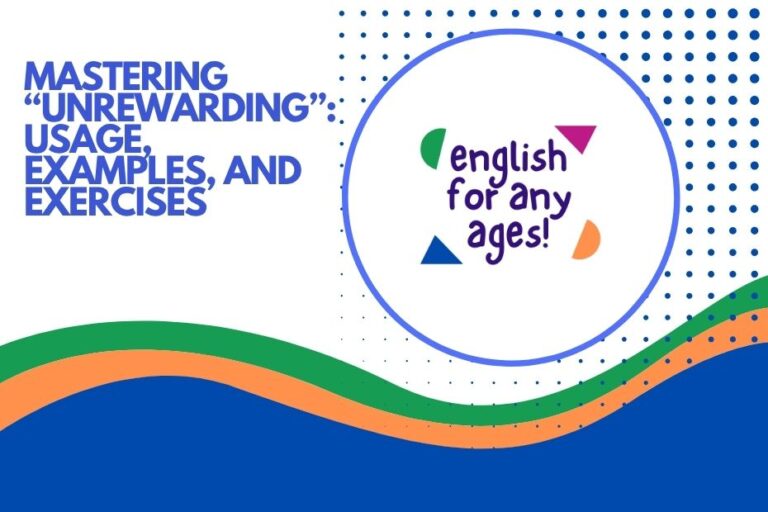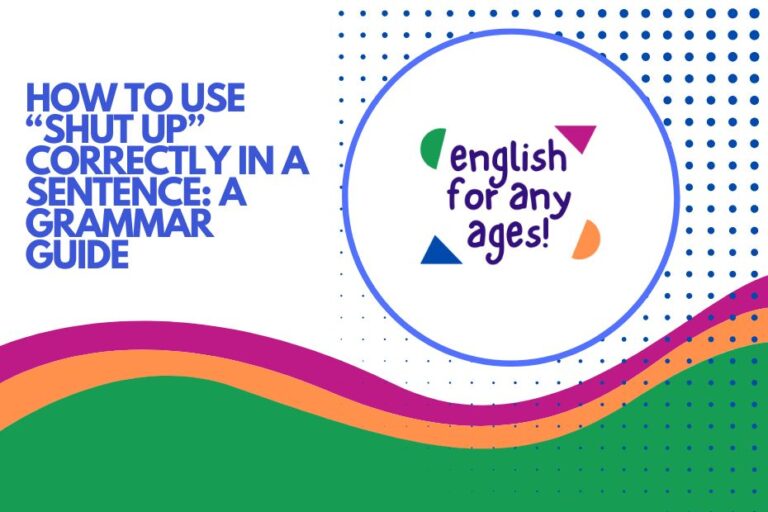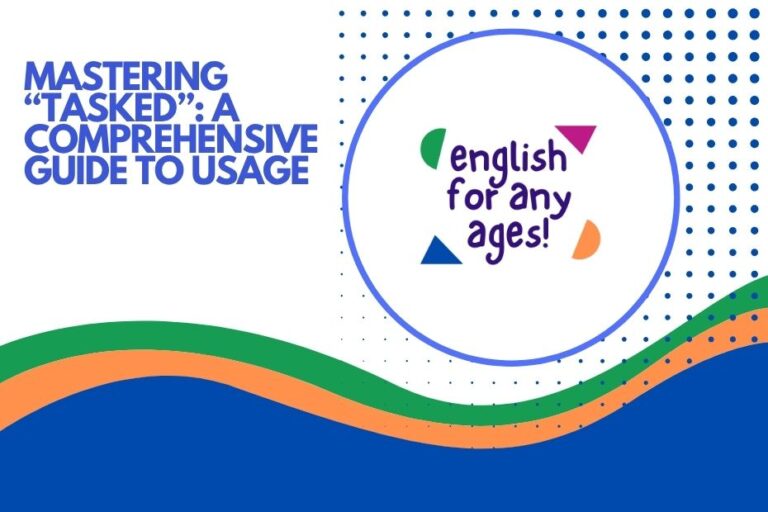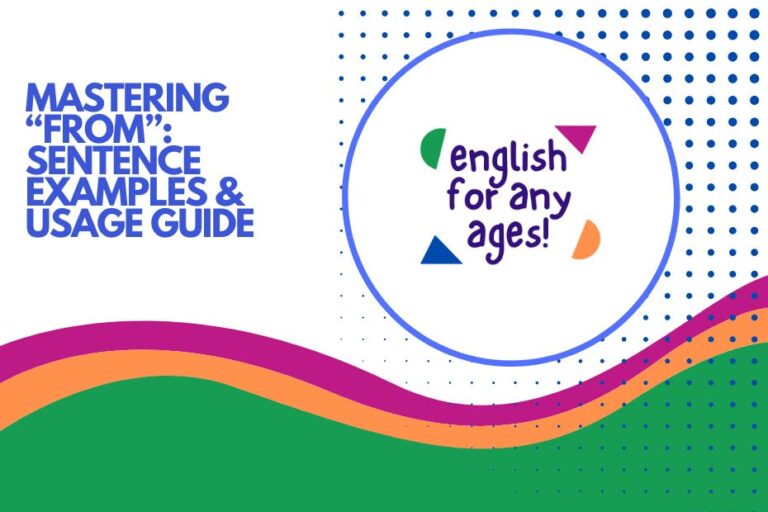Mastering “For”: Sentence Examples and Usage Guide
The preposition “for” is one of the most versatile words in the English language. It appears in countless sentences, performing a wide range of functions.
Understanding its various uses is crucial for both comprehending and constructing grammatically correct and nuanced sentences. This article provides a comprehensive guide to the preposition “for,” covering its definitions, structural roles, different categories of usage, common mistakes, and advanced applications.
Whether you’re an ESL student, a writer seeking to refine your prose, or simply someone interested in deepening your understanding of English grammar, this guide will equip you with the knowledge and practice to confidently use “for” in your everyday communication.
Table of Contents
- Introduction
- Definition of “For”
- Structural Breakdown
- Types and Categories of “For”
- Examples of “For” in Sentences
- Usage Rules for “For”
- Common Mistakes with “For”
- Practice Exercises
- Advanced Topics
- Frequently Asked Questions (FAQ)
- Conclusion
Definition of “For”
The word “for” functions primarily as a preposition in English. As a preposition, it connects a noun or pronoun (its object) to another word in the sentence, establishing a relationship between them.
This relationship can indicate various things, including purpose, duration, recipient, reason, and more. “For” can also function as a conjunction, though this usage is less common.
In this role, it connects two independent clauses and functions similarly to “because.” Understanding the specific function “for” performs in a sentence is key to interpreting its meaning correctly.
The core function of “for” is to show a connection or relationship between two elements in a sentence. This connection is highly context-dependent, meaning the specific meaning of “for” shifts based on the surrounding words and the overall intent of the sentence.
Its flexibility is what makes it such a common and essential preposition in English. Its diverse uses allow for precise and nuanced communication across a wide variety of contexts.
Structural Breakdown
The basic structure involving “for” as a preposition is relatively simple: For + Noun/Pronoun. The noun or pronoun that follows “for” is the object of the preposition. This prepositional phrase (for + object) then modifies another element in the sentence, providing additional information about it. The element being modified can be a noun, verb, or adjective.
Here are a few examples illustrating this structure:
- I bought a gift for her. (her is the object of the preposition, and the phrase modifies gift)
- He is known for his honesty. (his honesty is the object of the preposition, and the phrase modifies known)
- She studied hard for the exam. (the exam is the object of the preposition, and the phrase modifies studied)
When “for” is used as a conjunction, it connects two independent clauses. In this case, the structure is: Independent Clause, for Independent Clause. A comma typically precedes “for” when it functions as a conjunction. It is important to remember that using “for” as a conjunction is more formal and less common than using “because”.
For example:
- He couldn’t attend the meeting, for he was feeling unwell.
Types and Categories of “For”
The preposition “for” has many different uses, each conveying a slightly different meaning. These uses can be categorized into several types, which we will explore in detail below.
Duration
One of the most common uses of “for” is to indicate a period of time or duration. In this case, “for” is followed by a time expression, such as “five minutes,” “two years,” or “a long time.” This usage tells us how long something lasts or continues.
Purpose or Reason
“For” is also frequently used to express the purpose or reason behind an action or event. It answers the question “Why?” or “What is the purpose?” In this context, “for” often introduces an infinitive phrase (to + verb) or a noun that represents a reason.
Recipient or Beneficiary
Another important use of “for” is to indicate the recipient or beneficiary of something. This means the person or thing that receives something or benefits from an action.
In this case, “for” is followed by the noun or pronoun that represents the recipient.
Exchange or Substitution
“For” can also be used to indicate an exchange or substitution. This means that something is given or done in return for something else.
It often implies a transaction or a trade.
Direction or Destination
In some cases, “for” can indicate direction or destination, especially when used with verbs of movement or travel. It shows where someone or something is heading.
Characteristic or Quality
“For” can be used to describe a characteristic or quality that someone or something is known for or associated with. It highlights a defining feature.
Scheduled Time
The preposition “for” can also indicate a scheduled time or appointment. It is used to denote the specific timing or arrangement of an event or meeting.
Agreement or Support
When you are in agreement or support of something, you can use the preposition “for” to express this. It shows your alignment or advocacy for a cause, idea, or person.
Expressing Feelings
The preposition “for” can also describe the feeling you have towards something, like a liking or a preference.
Examples of “For” in Sentences
To further illustrate the different uses of “for,” let’s examine a variety of sentence examples organized by category. These examples will help solidify your understanding of how “for” functions in various contexts.
The following table illustrates the use of “for” to denote duration.
| Category | Example Sentence |
|---|---|
| Duration | I have lived in this city for ten years. |
| Duration | She studied for three hours last night. |
| Duration | The meeting lasted for an hour and a half. |
| Duration | We waited for a long time. |
| Duration | The movie played for two weeks at the local cinema. |
| Duration | He worked at the company for five years before retiring. |
| Duration | They practiced their music for several hours each day. |
| Duration | The rain continued for the entire afternoon. |
| Duration | I haven’t seen her for ages. |
| Duration | The course runs for six weeks. |
| Duration | The contract is valid for one year. |
| Duration | The bird stayed in its nest for a few days. |
| Duration | I’ve known him for many years. |
| Duration | The show will be broadcast for the first time tonight. |
| Duration | The treatment lasted for about 30 minutes. |
| Duration | The debate raged for several days online. |
| Duration | This tradition has been around for centuries. |
| Duration | The power outage lasted for a short period. |
| Duration | The concert is scheduled for two evenings. |
| Duration | She has been volunteering for almost a decade. |
| Duration | This exhibit will be open for the summer months. |
| Duration | The sale is only valid for a limited time. |
| Duration | They rehearsed for weeks before the performance. |
This table illustrates instances where “for” indicates purpose or reason.
| Category | Example Sentence |
|---|---|
| Purpose/Reason | I went to the store for milk. |
| Purpose/Reason | She is studying hard for the exam. |
| Purpose/Reason | He apologized for being late. |
| Purpose/Reason | They are raising money for charity. |
| Purpose/Reason | We need more information for our research. |
| Purpose/Reason | The company is known for its innovation. |
| Purpose/Reason | She was praised for her hard work. |
| Purpose/Reason | They were punished for their misbehavior. |
| Purpose/Reason | He is famous for his paintings. |
| Purpose/Reason | The machine is used for cutting metal. |
| Purpose/Reason | She uses her car for transportation. |
| Purpose/Reason | The tool is designed for precision work. |
| Purpose/Reason | He was commended for his bravery. |
| Purpose/Reason | The law was enacted for the public good. |
| Purpose/Reason | She is admired for her intelligence. |
| Purpose/Reason | The scholarship is awarded for academic excellence. |
| Purpose/Reason | He received an award for his community service. |
| Purpose/Reason | The treaty was signed for the sake of peace. |
| Purpose/Reason | She is respected for her leadership. |
| Purpose/Reason | The experiment was conducted for scientific purposes. |
| Purpose/Reason | The grant was given for environmental conservation. |
| Purpose/Reason | He was selected for his outstanding skills. |
| Purpose/Reason | The building was renovated for safety reasons. |
The table below shows the use of “for” to indicate the recipient or beneficiary.
| Category | Example Sentence |
|---|---|
| Recipient/Beneficiary | I bought a gift for my mother. |
| Recipient/Beneficiary | He built a house for his family. |
| Recipient/Beneficiary | She cooked dinner for her friends. |
| Recipient/Beneficiary | They are raising money for the children. |
| Recipient/Beneficiary | The company created a scholarship for deserving students. |
| Recipient/Beneficiary | This song is for you. |
| Recipient/Beneficiary | The charity provides food for the homeless. |
| Recipient/Beneficiary | The government offers support for small businesses. |
| Recipient/Beneficiary | He wrote a poem for his love. |
| Recipient/Beneficiary | She baked cookies for the team. |
| Recipient/Beneficiary | The organization provides shelter for animals. |
| Recipient/Beneficiary | He saved a seat for his friend. |
| Recipient/Beneficiary | She knitted a scarf for her sister. |
| Recipient/Beneficiary | The program offers training for young adults. |
| Recipient/Beneficiary | He planted a tree for future generations. |
| Recipient/Beneficiary | She reserved a table for her colleagues. |
| Recipient/Beneficiary | The community built a playground for the children. |
| Recipient/Beneficiary | He composed a melody for the orchestra. |
| Recipient/Beneficiary | She designed a website for the company. |
| Recipient/Beneficiary | The foundation provides grants for researchers. |
| Recipient/Beneficiary | He wrote a letter of recommendation for his student. |
| Recipient/Beneficiary | She organized a fundraiser for the hospital. |
| Recipient/Beneficiary | The museum offers free admission for seniors. |
The following table shows the use of “for” to indicate exchange or substitution.
| Category | Example Sentence |
|---|---|
| Exchange/Substitution | I traded my car for a motorcycle. |
| Exchange/Substitution | He paid $20 for the book. |
| Exchange/Substitution | She exchanged her dollars for euros. |
| Exchange/Substitution | They offered their services for free. |
| Exchange/Substitution | I’ll give you my old phone for that game. |
| Exchange/Substitution | He bartered his skills for food. |
| Exchange/Substitution | She swapped her necklace for a bracelet. |
| Exchange/Substitution | They exchanged vows for a lifetime of commitment. |
| Exchange/Substitution | I’ll take the blame for his mistake. |
| Exchange/Substitution | He gave up his seat for an elderly woman. |
| Exchange/Substitution | She sacrificed her time for the project’s success. |
| Exchange/Substitution | They traded stories for entertainment. |
| Exchange/Substitution | I’ll do the dishes for a piece of cake. |
| Exchange/Substitution | He offered his expertise for assistance. |
| Exchange/Substitution | She exchanged her old clothes for new ones. |
| Exchange/Substitution | They bartered their harvest for supplies. |
| Exchange/Substitution | I’ll take on extra work for a promotion. |
| Exchange/Substitution | He traded his vacation time for a higher salary. |
| Exchange/Substitution | She swapped her apartment for a house in the country. |
| Exchange/Substitution | They exchanged their knowledge for insights. |
Here is a table of sentences where “for” indicates direction or destination.
| Category | Example Sentence |
|---|---|
| Direction/Destination | We are leaving for Paris tomorrow. |
| Direction/Destination | The train is heading for New York. |
| Direction/Destination | She is aiming for success. |
| Direction/Destination | He set out for the mountains. |
| Direction/Destination | They are bound for glory. |
| Direction/Destination | The ship sailed for distant shores. |
| Direction/Destination | She’s heading for the top. |
| Direction/Destination | He’s striving for excellence. |
| Direction/Destination | They are reaching for the stars. |
| Direction/Destination | The path leads for the forest. |
| Direction/Destination | She is destined for greatness. |
| Direction/Destination | He is making his way for the city. |
| Direction/Destination | They are marching for freedom. |
| Direction/Destination | The river flows for the sea. |
| Direction/Destination | She is yearning for adventure. |
| Direction/Destination | He is driving for the coast. |
| Direction/Destination | They are competing for the gold medal. |
| Direction/Destination | She is advocating for change. |
| Direction/Destination | He is campaigning for the presidency. |
| Direction/Destination | They are fighting for their rights. |
Usage Rules for “For”
While “for” is a versatile preposition, it’s essential to follow certain usage rules to ensure clarity and grammatical correctness. These rules govern the proper placement and function of “for” in different sentence structures.
Rule 1: When indicating duration, “for” is always followed by a specific duration of time. Avoid using “for” with general time expressions like “always” or “sometimes.” For example, “I have known him for many years” is correct, but “I have known him for always” is incorrect. Instead, use “I have always known him.”
Rule 2: When expressing purpose, ensure that the noun or infinitive phrase following “for” clearly indicates the reason or goal. The connection between the action and the purpose should be logical and easily understood. For instance, “She went to the library for books” is clear, but “She went to the library for fun” might require further context to explain the purpose.
Rule 3: When indicating the recipient, make sure that the noun or pronoun following “for” is the actual beneficiary of the action. Avoid using “for” if the action is not directly benefiting the recipient. For example, “I bought a gift for my friend” is correct, but “I saw a movie for my friend” is incorrect (unless you specifically watched it on their behalf). In the latter case, “with” would be more appropriate (“I saw a movie with my friend”).
Rule 4: When using “for” as a conjunction, ensure that it connects two independent clauses and that the second clause provides a reason or explanation for the first. The comma preceding “for” is crucial in this usage. Also, remember that “because” is often a more common and natural-sounding alternative.
Rule 5: Be mindful of the idiomatic expressions that use “for.” Many common phrases incorporate “for” in specific ways, and deviating from these established patterns can sound awkward or incorrect. Examples include “known for,” “famous for,” “thank you for,” and “wait for.”
Common Mistakes with “For”
Even experienced English speakers sometimes make mistakes with the preposition “for.” Being aware of these common errors can help you avoid them in your own writing and speaking.
Mistake 1: Using “for” interchangeably with “to.” While both prepositions can indicate direction or recipient, they are not always interchangeable. “To” generally indicates movement towards a specific location or person, while “for” indicates purpose or benefit.
- Incorrect: I sent a letter for my friend.
- Correct: I sent a letter to my friend.
- Correct: I bought a gift for my friend.
Mistake 2: Omitting “for” when indicating duration. It’s important to include “for” when specifying a period of time.
- Incorrect: I have lived here ten years.
- Correct: I have lived here for ten years.
Mistake 3: Using “for” with incorrect verb tenses. When indicating duration, “for” is typically used with perfect tenses (e.g., present perfect, past perfect) to emphasize the continuous nature of the action.
- Less Common: I lived here for ten years. (implies you no longer live there)
- Correct: I have lived here for ten years. (implies you still live there)
Mistake 4: Confusing “for” as a preposition with “for” as part of an infinitive. The word “for” can also be part of an infinitive phrase when it introduces the subject performing the action. This can be confusing if you are not careful.
- Correct: It is important for her to study. (for her introduces the subject her, who is studying)
- Correct: She is studying for the exam. (for the exam shows the purpose of studying)
Mistake 5: Using “for” when “since” is more appropriate. “For” indicates a duration of time, while “since” indicates the starting point of a duration.
- Incorrect: I have known him for 2005.
- Correct: I have known him since 2005.
- Correct: I have known him for 18 years.
Practice Exercises
Test your understanding of “for” with these practice exercises. Fill in the blanks with the correct use of “for” or choose the correct sentence.
Exercise 1: Fill in the Blanks
| Question | Answer |
|---|---|
| 1. I’m going to the store ______ some groceries. | for |
| 2. She has been working here ______ five years. | for |
| 3. He bought a new car ______ his wife. | for |
| 4. They apologized ______ being late. | for |
| 5. This gift is ______ you. | for |
| 6. She is known ______ her kindness. | for |
| 7. We are leaving ______ Italy tomorrow. | for |
| 8. He paid $10 ______ the ticket. | for |
| 9. She is studying hard ______ the test. | for |
| 10. I waited ______ an hour. | for |
Exercise 2: Choose the Correct Sentence
| Question | Answer |
|---|---|
| 1. a) I sent a letter for my mother. b) I sent a letter to my mother. | b) I sent a letter to my mother. |
| 2. a) She waited the bus for an hour. b) She waited for the bus for an hour. | b) She waited for the bus for an hour. |
| 3. a) He is famous of his cooking. b) He is famous for his cooking. | b) He is famous for his cooking. |
| 4. a) They are raising money to charity. b) They are raising money for charity. | b) They are raising money for charity. |
| 5. a) I have known him since five years. b) I have known him for five years. | b) I have known him for five years. |
| 6. a) She practices piano for two hours everyday. b) She practices piano for two hours every day. | b) She practices piano for two hours every day. |
| 7. a) They thanked her for her help. b) They thanked her to her help. | a) They thanked her for her help. |
| 8. a) I am grateful for your support. b) I am grateful to your support. | a) I am grateful for your support. |
| 9. a) He is eligible for the position. b) He is eligible to the position. | a) He is eligible for the position. |
| 10. a) She has a talent for singing. b) She has a talent to singing. | a) She has a talent for singing. |
Exercise 3: Error Correction
| Question | Answer |
|---|---|
| 1. I’m grateful to your help. | I’m grateful for your help. |
| 2. She waited to him for a long time. | She waited for him for a long time. |
| 3. He is responsible to the accident. | He is responsible for the accident. |
| 4. I have been studying English since two years. | I have been studying English for two years. |
| 5. She is known of her beauty. | She is known for her beauty. |
| 6. They are preparing to the party. | They are preparing for the party. |
| 7. I apologized to being late. | I apologized for being late. |
| 8. He is famous of his inventions. | He is famous for his inventions. |
| 9. She is eligible to the scholarship. | She is eligible for the scholarship. |
| 10. They are thankful to your generosity. | They are thankful for your generosity. |
Advanced Topics
For advanced learners, it’s helpful to explore more nuanced aspects of “for” and its interaction with other grammatical elements. This includes understanding its role in complex sentence structures and idiomatic expressions.
“For” in Complex Sentences: In complex sentences, “for” can introduce adverbial clauses that provide reasons or explanations. These clauses often begin with “as” or “because,” but “for” can also be used, especially in more formal writing. Example: “He couldn’t finish the race, for he had injured his ankle.”
Idiomatic Expressions with “For”: English is full of idiomatic expressions that use “for” in unique and sometimes unpredictable ways. These expressions often have meanings that are not immediately obvious from the individual words. Examples include: “a taste for,” “a knack for,” “for good,” “for now,” “for all,” and “for the sake of.” Mastering these idioms requires memorization and exposure to authentic language.
“For” with Gerunds: “For” is often followed by a gerund (a verb ending in -ing that functions as a noun) when expressing purpose or reason. Example: “She is saving money for traveling.” The gerund clarifies the purpose of the action (saving money).
Frequently Asked Questions (FAQ)
Here are some frequently asked questions about the preposition “for” to further clarify its usage.
Q1: What is the difference between “for” and “because”?
A: Both “for” and “because” can introduce a reason or explanation. However, “because” is more common and direct.
“For” is often used in more formal writing and tends to provide a secondary or additional reason. Also, “because” can be followed by an independent or dependent clause, but “for” usually introduces an independent clause and is preceded by a comma.
Q2: Can “for” always be replaced with “to” when indicating a recipient?
A: No, “for” and “to” are not always interchangeable. “To” generally indicates the direction something is moving, while “for” indicates who benefits from something.
Use “for” when the recipient is benefiting from the action (e.g., “I bought a gift for my friend”). Use “to” when something is being given or sent to someone (e.g., “I sent a letter to my friend”).
Q3: How do I know when to use “for” to indicate duration?
A: Use “for” followed by a specific period of time (e.g., “for five years,” “for two weeks”) to indicate how long something lasts or continues. The action described should have a clear beginning and end (even if the end is ongoing).
Avoid using “for” with general time expressions like “always” or “sometimes.”
Q4: What is the correct way to use “for” in a sentence expressing gratitude?
A: The correct phrase is “Thank you for…” followed by the thing you are grateful for. For example, “Thank you for your help” or “Thank you for listening.”
Q5: How can you use the word “for” to talk about scheduled time?
A: You can use the word “for” to talk about scheduled time like this: “I have a meeting scheduled for tomorrow”, “I have a dentist appointment for 3 PM this afternoon.”
Q6: What are some common idiomatic expressions using “for”?
A: There are many, but some common ones include: “known for” (famous or recognized for something), “wait for” (to remain until someone arrives), “for good” (permanently), “for now” (temporarily), “for the sake of” (for the purpose of), and “a taste for” (a liking or preference for something).
Q7: What is the difference between “for” and “during”?
A: “For” indicates the length of time something occurs, while “during” indicates when something occurs within a specific period. For example, “I studied for three hours” (length of time) vs

